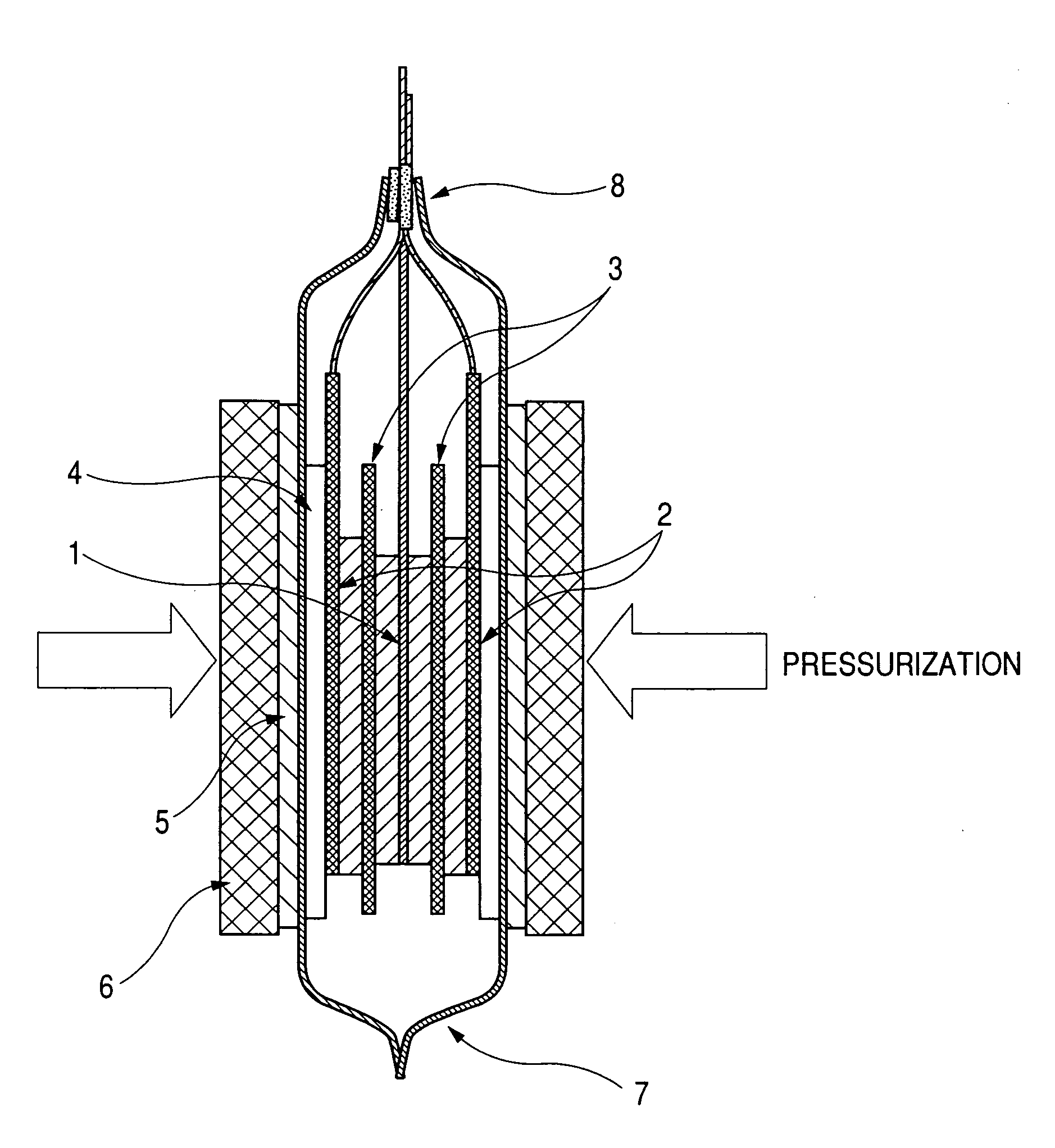Nonaqueous electrolyte and lithium secondary battery employing the same
a technology of nonaqueous electrolyte and lithium secondary battery, which is applied in the manufacture of non-aqueous electrolyte cells, cell components, final products, etc., and can solve the problems of short-circuit failure inside the cell, decreased efficiency of charging and discharging, and reduced cycle characteristics
- Summary
- Abstract
- Description
- Claims
- Application Information
AI Technical Summary
Benefits of technology
Problems solved by technology
Method used
Image
Examples
example 1
[Production of Positive Electrode]
[0179]A positive electrode was obtained by mixing 90% by weight of lithium nickel compound oxide (LiNi0.82Co0.15Al0.03O2), 5% by weight of polyvinylidene fluoride (PVdF), and 5% by weight of acetylene black, adding N-methylpyrrolidone to form a slurry, and applying the slurry onto both surfaces of a current collector made of aluminum, followed by drying.
[Production of Negative Electrode]
[0180]A negative electrode was obtained by mixing 90% by weight of graphite powder and 10% by weight of PVdF, adding N-methylpyrrolidone to form a slurry, and applying the slurry onto one surface of a current collector made of copper, followed by drying.
[Blending of Electrolyte]
[0181]A base electrolyte was prepared by adding 2 parts by weight of vinylene carbonate to 100 parts by weight of a mixed solvent of ethylene carbonate and ethyl methyl carbonate (mixing ratio of 1:3 by volume) containing LiPF6 in a ratio of 1.25 mol / L. To the base electrolyte was added 1 part...
example 2
[0186]A lithium secondary battery was prepared in the same manner as in Example 1 with the exception of the use of an electrolyte in which the amount of 1,2,4-butanetriol trimethanesulfonate added was changed to 3 parts by weight, and battery characteristic tests the same as in Example 1 were conducted. The results are shown in Table 1.
example 3
[0187]A lithium secondary battery was prepared in the same manner as in Example 1 with the exception of the use of an electrolyte in which the amount of 1,2,4-butanetriol trimethanesulfonate added was changed to 5 parts by weight, and battery characteristic tests the same as in Example 1 were conducted. The results are shown in Table 1.
PUM
| Property | Measurement | Unit |
|---|---|---|
| temperature | aaaaa | aaaaa |
| melting point | aaaaa | aaaaa |
| water content | aaaaa | aaaaa |
Abstract
Description
Claims
Application Information
 Login to View More
Login to View More - R&D
- Intellectual Property
- Life Sciences
- Materials
- Tech Scout
- Unparalleled Data Quality
- Higher Quality Content
- 60% Fewer Hallucinations
Browse by: Latest US Patents, China's latest patents, Technical Efficacy Thesaurus, Application Domain, Technology Topic, Popular Technical Reports.
© 2025 PatSnap. All rights reserved.Legal|Privacy policy|Modern Slavery Act Transparency Statement|Sitemap|About US| Contact US: help@patsnap.com



